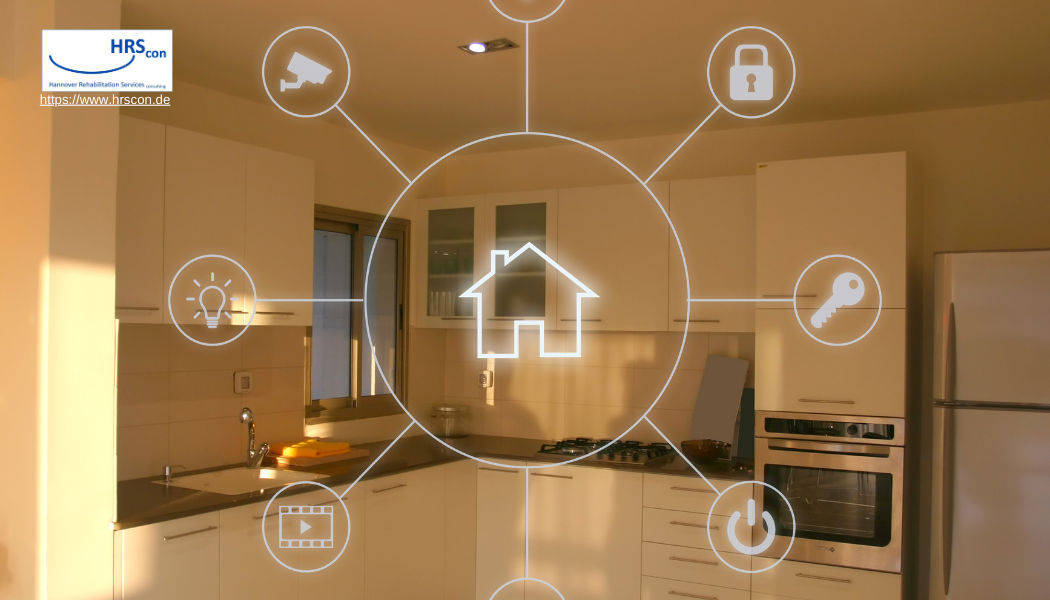In the age of smart homes and assistive technology, a new frontier in disability support is emerging. A recent scoping review led by researchers from Flinders University, published in Disability and Rehabilitation: Assistive Technology, sheds light on the profound health, social, and economic impacts of home automation systems on individuals with disabilities. This groundbreaking research examines the tangible benefits of technology that empowers people to live with greater independence and dignity.
Understanding the Scope of Home Automation
Home automation encompasses technology that automates or remotely controls household functions, such as lighting, climate, entertainment, and security systems. For people living with physical, cognitive, or sensory disabilities, these systems hold the potential to significantly enhance quality of life. From smart thermostats to voice-activated assistants, these tools can be game-changers.
The study reviewed 11 international research articles, analyzing outcomes across diverse settings and populations. Participants ranged in age from 18 to 86 years, representing conditions like spinal cord injuries, Down syndrome, motor neuron disease, and stroke recovery. Technologies evaluated included control systems for televisions, lights, air conditioning, and even safety alerts for unattended dangerous items.
Key Findings: The Impact of Home Automation
Seven primary outcomes emerged from the review, each demonstrating the transformative potential of assistive technology:
- Improved Daily Activity Performance
Home automation facilitated tasks like meal preparation, managing entertainment, and personal care. Participants reported increased ability to engage in routine activities, which previously required assistance. Quantitative assessments using tools like the Barthel Index and the Functional Independence Measure validated these improvements. - Enhanced Independence
A striking theme was the newfound autonomy individuals gained. Participants no longer needed constant reliance on caregivers for tasks like opening doors or adjusting lighting. Instead, technology allowed them to exercise control over their environments. - Autonomy and Decision-Making
Beyond independence, participants described a stronger sense of self-governance. For instance, individuals with spinal cord injuries reported greater spontaneity in daily life choices, fostering a profound sense of empowerment. - Mental Health Benefits
Mental well-being improved across studies. Participants experienced reduced anxiety, heightened self-esteem, and an overall sense of psychological well-being. Quantitative tools such as the WHO Quality of Life survey underscored these findings. - Social and Community Connectedness
Home automation encouraged social interactions by reducing physical and logistical barriers. Features like voice-controlled emails enabled individuals to stay connected with family and friends, reducing feelings of isolation. - Increased Safety
Automated safety systems, such as alerts for open doors or unattended appliances, enhanced participants’ sense of security. This was especially valuable for individuals with cognitive impairments. - Reduced Reliance on Paid and Informal Care
Several studies highlighted a reduction in the hours required from paid carers and informal caregivers, such as family members. This not only saved costs but also fostered a sense of independence for users.
Table 1: Summary of Home Automation Outcomes
| Outcome | Key Impact | Example |
|---|---|---|
| Daily Activity Performance | Increased ability to perform routine tasks | Using smart thermostats for self-managed temperature control |
| Independence | Reduced reliance on caregivers | Voice-controlled lights and appliances |
| Autonomy | Enhanced decision-making and control | Choosing TV programs without assistance |
| Mental Health | Reduced anxiety and improved self-esteem | Remote control of personal entertainment |
| Social Connectivity | Strengthened relationships | Voice-activated emails and video calls |
| Safety | Reduced environmental risks | Alerts for unattended appliances |
| Caregiver Reliance | Decreased need for assistance | Automated door systems enabling solo outings |
Real Stories from the Field
One study from Ireland focused on individuals with spinal cord injuries using environmental control systems. Participants highlighted how smart devices enhanced their autonomy, reduced dependence on caregivers, and improved self-confidence. Similarly, a French study observed individuals with Down syndrome experiencing heightened self-determination and psychological well-being through smart home technologies.
A particularly compelling example comes from a case study in the UK. A woman with tetraplegia recounted how home automation enabled her to engage in daily tasks independently, significantly reducing her reliance on carers and elevating her quality of life.
Barriers and Challenges
Despite the promise, access to home automation remains uneven. In countries like Australia, funding for such technologies through the National Disability Insurance Scheme (NDIS) is available but complex to navigate. Globally, only a fraction of disability support budgets is allocated to assistive technology, leaving many to self-fund their setups.
Moreover, the scoping review revealed gaps in research. Most studies had small sample sizes and lacked control groups, limiting the generalizability of findings. There is a clear need for more robust, large-scale studies to evaluate the long-term impacts of home automation.
Looking Ahead: Policy and Innovation
The findings from this review underscore the potential for assistive technology to revolutionize care for people with disabilities. Policymakers are urged to simplify funding pathways and expand support for such technologies. At the same time, innovation must continue to focus on affordability and user-centric design.
Conclusion: A New Chapter in Disability Support
Home automation represents a significant step forward in enabling individuals with disabilities to lead more independent and fulfilling lives. By addressing fundamental needs and enhancing autonomy, these technologies are reshaping what is possible for millions worldwide. As research and policy catch up, the potential for even greater impact remains on the horizon.
For readers interested in the intersection of technology and social good, the findings from this review are a powerful reminder of how innovation can transform lives. The future is smart, inclusive, and full of promise.




